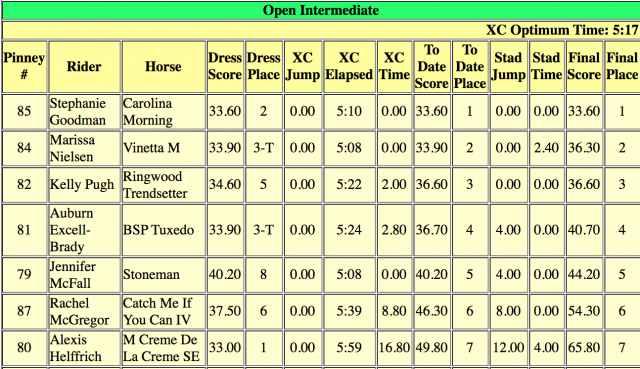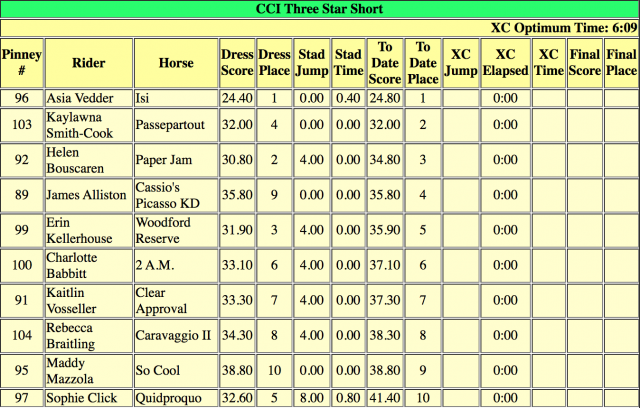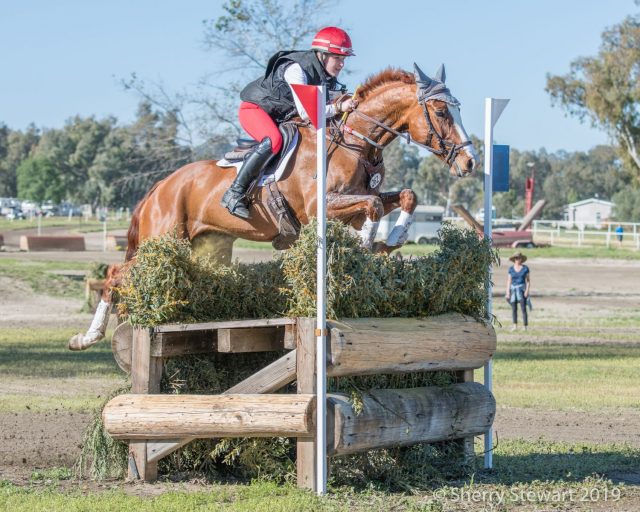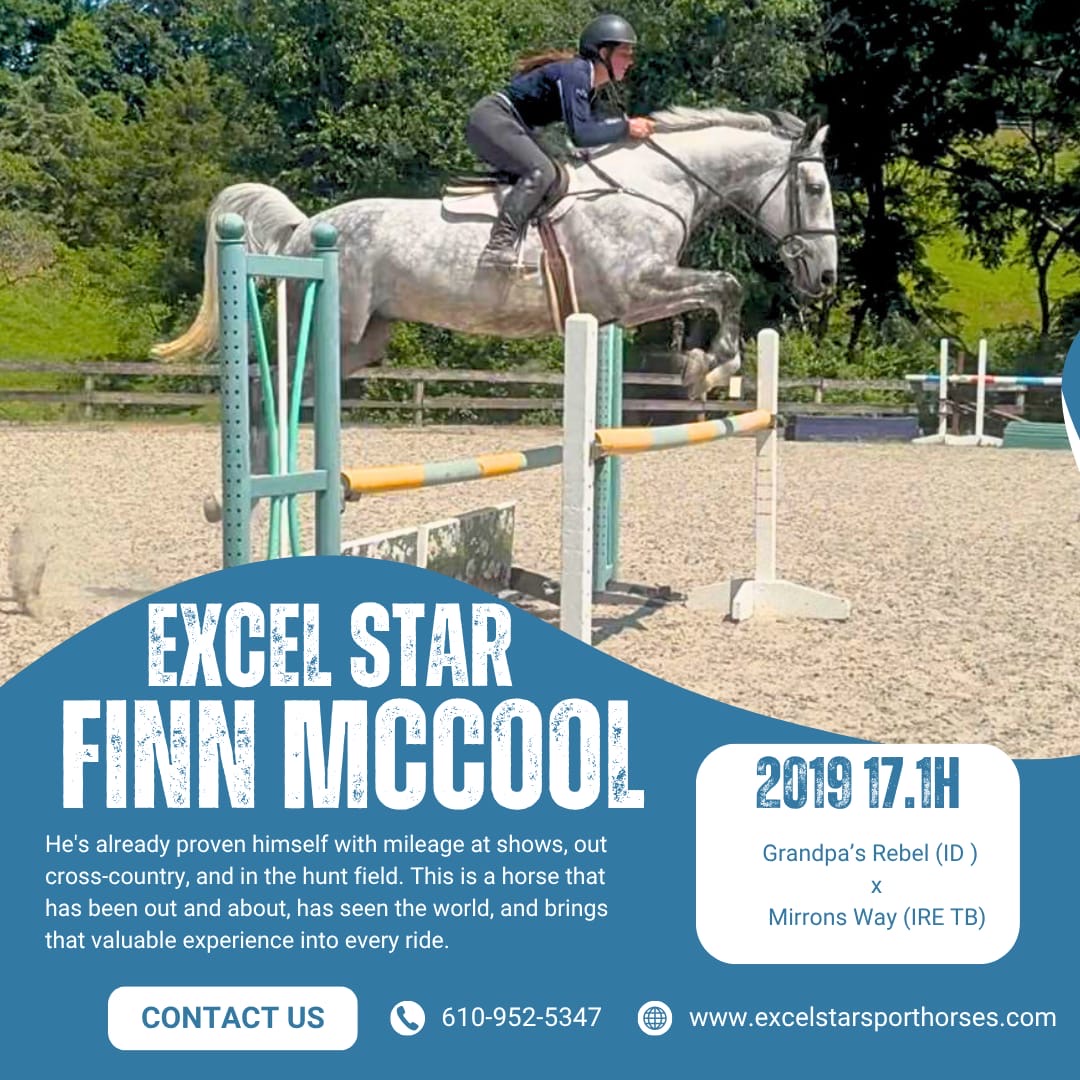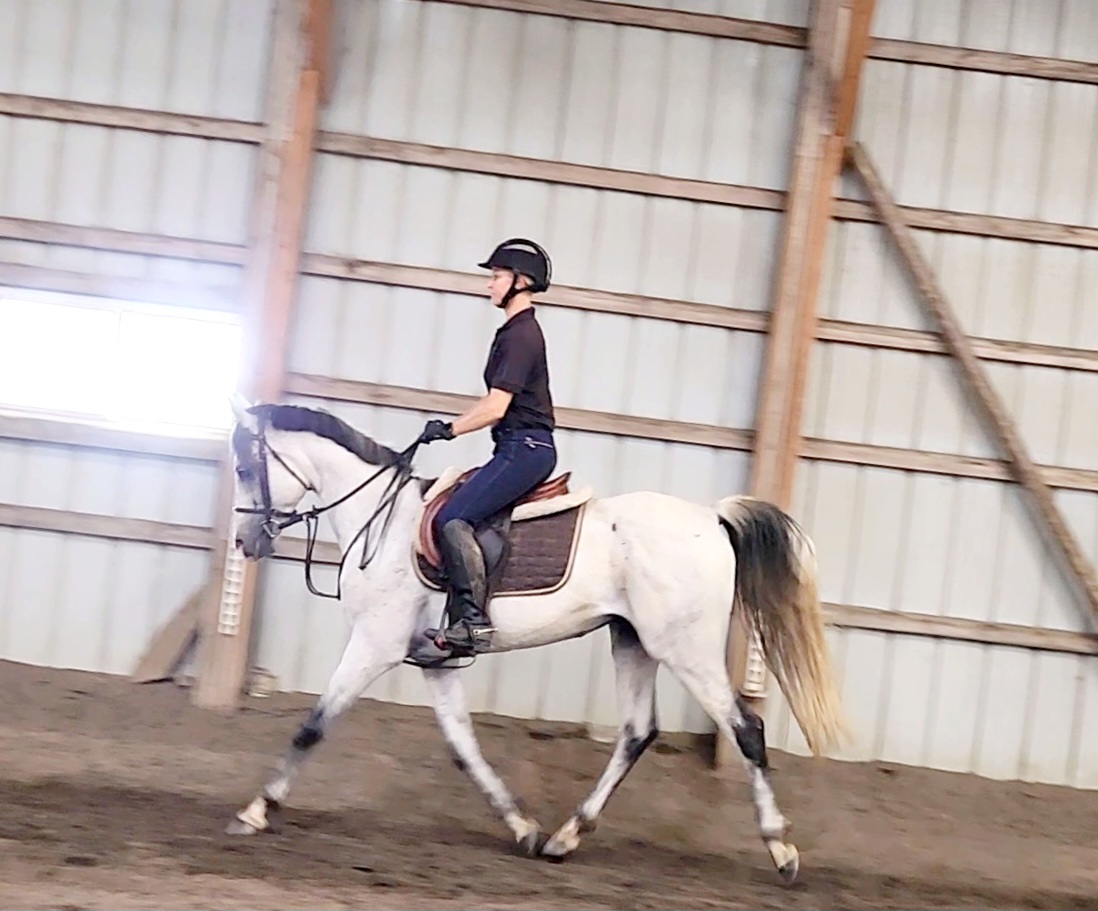
Andrew Hoy and Vassily de Lassos at WEG. Photo by Leslie Threlkeld.
When pressed, Andrew Hoy will concede he’s a bit of a rock star in his native Australia. Visiting home a week after finishing individual fourth and leading the Aussie eventing team to a 2020 Olympic-qualifying sixth place, Andrew enjoyed fan encounters with flight attendants, taxi drivers and passersby on the street.
“It’s not something I’ve gone out to develop,” says the seven-time Olympic and World Equestrian Games eventer whose accolades include an Order of Australia from Queen Elizabeth and inclusion in the Sport Australia Hall of Fame. “But this thing that I enjoy doing — riding horses — has taken me onto a world stage and into the living rooms of so many people.”
No fame at the barn, however. “Not one of my horses has any idea what I’ve done in my life or who I am,” says Andrew of the equine attitude at Somerby Stables in Leicestershire, England. “They don’t read the newspapers or follow the Internet. They don’t even know I’m responsible for their health. They think that’s the grooms. All they know is the way I work with them. This is what I love about working with horses – they will always treat me exactly like I treat them. And I aspire this to be a partnership of trust, care and mutual respect.”
Over a 40-year international career, bracketed by the 1978 World Championships at 19 and — so far — the 2018 WEG in Tryon at 59, Andrew’s methodology has led to five Olympic medals, three of them gold, and four World Championships medals.
How his way with horses has evolved was one of several topics covered in Kim Miller’s wide-ranging chat with Andrew shortly after the WEG.

Andrew Hoy and Vassily de Lassos at WEG. Photo by Leslie Threlkeld.
Kim: You had two horses on the Australian team’s WEG long list: Basmati (Grafenstolz x Suchard) and Vassily de Lassos (Jaguar Mail x Jalienny). What was it that tipped the selectors’ scales toward Vassily?
Andrew: I believe both horses are equally talented and that it was Vassily’s results sheet that made them feel he was the stronger of the two. Of which, at this point in time, I fully agree with – Vassily is currently a little more advanced in his education. But they are both only 9 years of age, so very much at the beginning of their international career.

Andrew Hoy and Basmati at the 2018 WEG Test Event. Photo by Leslie Threlkeld.
Kim: Basmati and Vassily are two of several strong horses in your string now. Where are you in terms of quantity and quality of horses, compared to other points in your career?
Andrew: I’m competing a total of 10 horses, and I feel they are all absolutely very good. I would describe this as the nicest lot of young horses I’ve ever had. That’s a big statement because I’ve had a lot of very nice horses in my time, with wonderful people owning them and supporting me.
Kim: What has put you into this nice position now?
Andrew: Well, with a bit of age, I’d say I’m riding better: I’m riding well. My wife Stefanie has helped me enormously in the selection of horses. I’d say we have a good formula for looking at horses at this point. We ask ourselves, what it is that makes the horse so special? Is it just the rider or just the horse? We look at the breeding.
It’s never something we do alone. Beyond Stefanie and me, it’s our team at home, our service providers, everything from the feed and supplements, the tack, the bits, the physiotherapists, etc. It’s really a culmination of all these things coming together after being in the industry for some time. I’m very much just wanting to work at the pointy end of the sport, and for that, you need to start with young horses and develop them all the way throughout their careers to create a relationship of trust and mutual respect.
Kim: What’s your secret in finding young horses?
Andrew: I don’t think there are any secrets! I may look at horses a little differently than others in that I always go in with the purpose of saying, “How can I make this work?” rather than looking for reasons not to buy the horse.

Andrew Hoy and Vassily de Lassos at WEG. Photo by Leslie Threlkeld.
Kim: Owners David and Paula Evans bought Vassily for you in May of 2017, when he was going two-star with top French rider Thomas Carlile. What was it you saw in him that you wanted to work with?
Andrew: Well, he was an exception! I’d heard of him about 18 months before I first saw him. I called Thomas asking if he had any nice horses for sale. He told me about this chestnut about to go two-star. He said he was a nice, straightforward horse, but that he always had to have a pony with him and that he was a stall weaver. I told Thomas, “I don’t need this! Life is difficult enough without that.”
Then I went to look at him about 12 months later. As he was coming out of the stables, I wasn’t convinced I would like this horse. When I sat on him, I thought, “Thomas does a great job with this horse, but he doesn’t feel so special to me.” Then I went back to the hotel and kept looking at his results sheets and those were very special.
The next morning, I decided I needed to think outside of the box. Part of me said “no,” and another said, “This is a special horse — I have to do this” and I went with that. It certainly helped that my stable vet, who I have got a close working relationship with, felt confident that the way I manage horses, we could find a way to work things out.
Kim: At what point were you sure you’d made the right decision?
Andrew: After show jumping at the WEG!
Kim: How does that experience with Vassily represent your approach to horses?
Andrew: Throughout my career, I’ve never been a rider to have a great, big string of horses on my team. What I really enjoy is working with each horse and getting to know their personality. Sitting on them myself, rather than having someone else do it for me, doing a lot of work from the ground and different forms of cross-training, which we have to do for fitness anyway. That way, I know their personality and I know what each horse finds difficult or easy. What I’m looking for when we are in competition is harmony, and that’s how we get it.

Andrew Hoy and Vassily de Lassos at WEG. Photo by Leslie Threlkeld.
Kim: Vassily’s nickname is “Mr. Speedy Gonzales” and he sailed over cross country and show jumping in Tryon. So, is it dressage that he finds difficult?
Andrew: I would not say it’s a difficulty for him. It’s a matter of creating muscle memory for it and that takes time working him through things to get to a consistent way of going.
His WEG dressage test was the most accurate and consistent test he’d ever performed. Before that, his test at Aachen in June was the best. So he’s a work in progress and a horse that actually rises to the occasion at every show. The bigger the show, the more calm and relaxed he is and the more we work as one.
I’m actually that way, too.
Kim: Were you always that way, or has it come with experience?
Andrew: Very early in my career, I would put it down to having no knowledge — to not knowing any better. In 1978, I was this 19-year-old kid who’d grown up farming in Australia and happened to have a great pony. All of a sudden I ended up on the team for the World Three-Day Championships (at the then-new Kentucky Horse Park in Lexington, Kentucky) at the last moment.
Kim: I’m sure the story is a little more than that!
Andrew: I grew up on my family’s farm, where we breed cattle and farm arable land. Along with chasing kangaroos riding bareback, I did Pony Club and Camp Drafting, which is a big sport in Australia. It’s like the American sport of cutting horses, working with a horse and cow. I was actually a Junior Australian Champion in that. Through Pony Club, I did normal English riding, and some eventing. At 15, my parents bought Davey, who was bred for racing, trained for ranch work and became my partner in two Olympic Games, two World Championships and a Burghley title.
On the way home from the World Championships in 1978, I stopped in the UK, where my horse was supposed to go through quarantine – and I ended up staying there for two years at Gatcombe Park, working with the Princess Royal and Captain Mark Phillips. Between 1980 and 1993 I was back in Australia, mostly farming and also riding my horses – travelling every two years to Olympic Games or World Championships from my Australian home base.
In 1993, at 34 and after our first Olympic Gold Medal in Barcelona, I decided to do the horses as a profession and I moved back to the United Kingdom.
Kim: Looking back, do you feel you could have been successful had you stayed in Australia as a professional rider?
Andrew: You can be successful from Australia, or any country, if you have talent, ability, a good feel for the horse and if you are prepared to work hard. But if you want to be world #1, you need to be in Europe – this is where the hub of our sport is. It’s the same for Americans.
Kim: Is it harder to get support and sponsorships when you are not based in your own country?
Andrew: Yes, but if you want to be good at anything, it is just incredibly hard work, no matter what industry you are in. Young people must not be under any illusions. The higher you go, the further you can fall. You have to work incredibly hard if you want to keep a good career.
Kim: Does that point need extra emphasis in our sport these days?
Andrew: I’ve worked with a lot of people throughout my career and one thing I notice is that I feel many young people nowadays don’t realize the hours that most successful people put in. It always looks easy and it never is.
Everything in society is very instant these days. When I was a kid, if I wanted to obtain something, I had to work and have cash in hand to buy it, for example. Today there are credit cards. I think the older generation learned to be patient, to work for things and, with horses, to develop and stick with a program and a system, whereas today there’s a lack of patience. For me, after the 1978 World Championships and spending the two years in the UK, it wasn’t until the end of that time that I felt I was starting to ride with some feeling and make progress.
Kim: How does your experience come into play in the team context?
Andrew: I’m very happy to talk with any of the riders and, when asked, offer advice about what I do, the way I go about things and formulas that I have. I have nothing to hide and I want to work with all of the riders because they all contribute to the team success.
Kim: Any epiphanies that have come with your 59 years?
Andrew: When you start as a rider, you first think, how good is the horse? Then, you think maybe I have to ride well. For me, the more I’ve stayed in the sport, the more top trainers I have worked with, the more I realize the importance of good riding — 90% of issues are created by the rider, not by the horse.
I have also realized the importance of other aspects that are involved around the management of the horse – whether it is daily routines, feeding, tack, physiotherapy, veterinary – it all has a huge impact on the horses’ wellbeing and therefore performance
Kim: What are some of the more unique aspects of your horse management?
Andrew: In the last year, I’ve started working with a South African company, Bombers Bits, that makes tailored bits based on a mold of each horse’s mouth. The fact that no horse has the same mouth is something I never thought of before and I find it fascinating.
The saddlery I use, Fairfax Saddles, incorporates a lot of biomechanical testing, for horse and riders, and that’s another subject I’m incredibly interested in. I feel at times there is not enough scientific evidence used in horse care and welfare and these are products that use science to produce good results.
Steamed hay is a core of our horses’ diet. I saw Haygain’s steamed hay units in the company’s earliest stages and was immensely impressed. Having grown up working on my family’s farm, it made immediate sense to me. I recognized the importance to respiratory health of taking the bacteria and dust out of the hay and having it as natural as one can have it. We normally travel with our steamer and we were grateful to have the company make one available during the WEG.

Andrew and Stefanie with their daughter, Philippa. Photo by Matthew Roberts.
Kim: You and Stefanie became parents with the birth of Philippa Isabel 13 months ago. How has fatherhood affected you?
Andrew: I did not realize the joy that comes with it. Stefanie and I so often comment on how lucky we are to have a healthy little girl. It’s a joy for us and it’s important for us to make a good life for her. We can’t determine where she finishes, but we can teach her values and respect and give her opportunities.
Kim: Can you tell if she has the horse genes yet at 13 months?
Andrew: She came to the WEG with us with her Australian t-shirt and little flag and enjoyed it. By being around horses, I think she will learn to work with animals if she decides to. But if not, it’s fine by me. We’ll support her whatever she does.
Kim: Does Stefanie ride?
Andrew: She’s very much a social rider. If it’s a bright sunny weekend, she’ll say I’d like to ride. She has her own communications business, HMC Horse Marketing Consulting with equestrian and mainstream corporate clients including Mercedes Benz and Hermès. She’s incredibly busy.

Andrew and Philippa at WEG. Photo courtesy of hoyteam.com.
Kim: Your remarkable string of international accomplishments gets a lot of attention. How close an eye do you keep on the running tallies?
Andrew: I could probably go through the Olympic accomplishments and work out the tally. But one year, after winning Badminton, a great friend congratulated me and said, “Be careful not to celebrate today’s performance too much because you’ll miss tomorrow’s performance.”
My dad was very progressive in that he was always working forward. He taught me that it’s always important to be aware of your performance — to analyze it, and find what you can improve on, then go forward, not dwell on it or look backwards. It’s always about the next performance.
Kim: Do you plan for the Tokyo Olympics in 2020 as your next international performance?
Andrew: It’s very much in my sights with Vassily, Basmati and some of my other horses. So I just want to establish good performances. It seems like it’s a long way off, but it’s not that far away.
Kim: You are active in two charities, Right To Play and The Wobbleberries, and your home stable, Somerby Stables, hosted a riding for the disabled program for many years. I gather that giving back is a priority.
Andrew: For any successful business person or athlete, we can get so tied up in what we are doing that we don’t appreciate our immediate surroundings and circumstances. It’s very good to work with charities, especially such good ones. They are wonderful organizations through which we’ve met wonderful people.
Kim: With all that you’ve accomplished, what remains on your lifetime goal sheet?
Andrew: The goal is what I’ve always strived for: riding my horse as well as I possibly can and achieving harmony. What inspires me the most is just working with the horse, learning from them every day, creating a partnership and develop day by day.
Kim: Thank you Andrew! We look forward to many more years watching you and your horses at the top level.
Andrew: Thank you. My dad, Jim, and my mother, Dorothy, are 94 and 91 respectively. I just left visiting them and my dad is still farming a lot of cattle and very aware of everything that’s going on. We were visiting to celebrate the life of an aunt who passed at 101. So, I hope I have their genes!
Article presented by Haygain USA. Haygain is committed to improving equine health through scientific research, product innovation and consumer education in respiratory and other equine health issues. With offices in the USA and England, Haygain manufactures and distributes products for healthier horses to 19 countries, including its Haygain® Hay Steamers, ComfortStall® Flooring System, ForagerTM Slow Feeder and Flexineb Nebulizer. Visit www.haygain.us for more information.






























